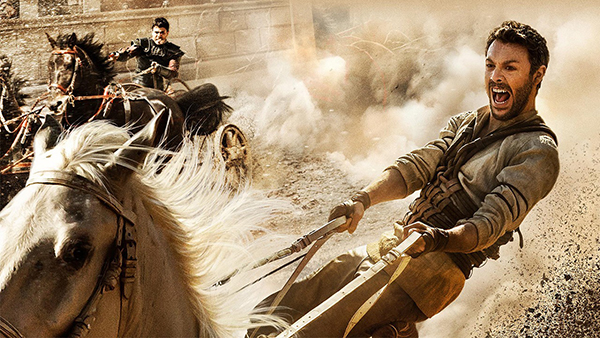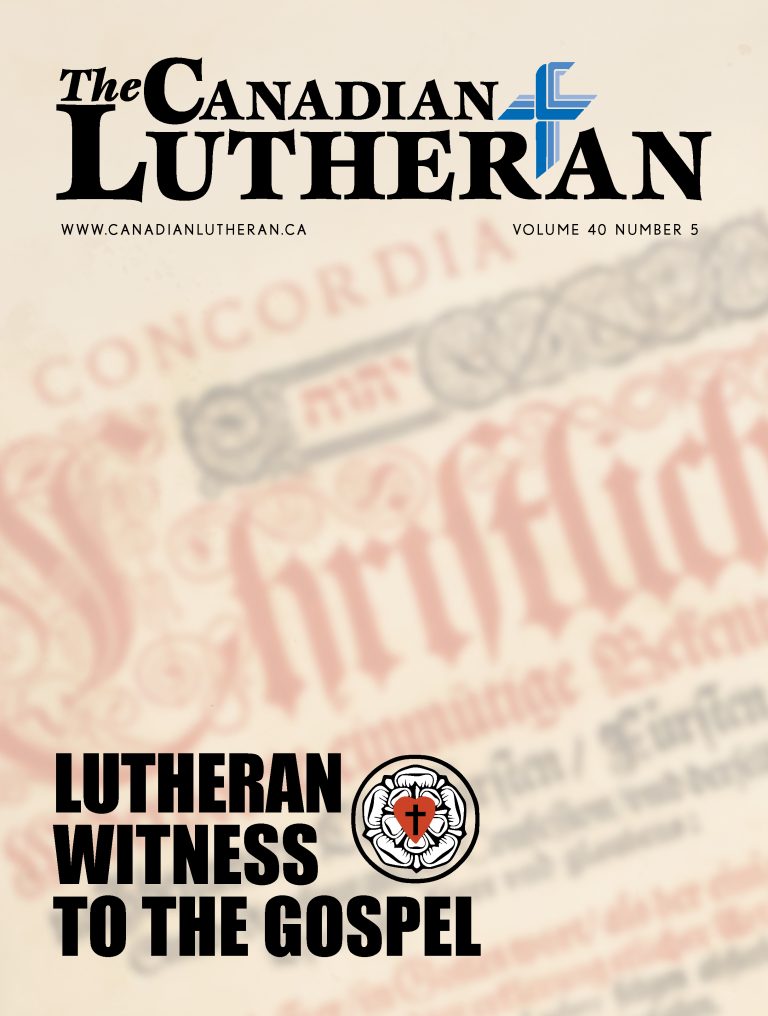Ben-Hur: Help! My Chariot is Stuck!

by Ted Giese
As expected, Timur Bekmambetov’s 2016 adaptation of Ben-Hur differs from the 1959 William Wyler film starring Charlton Heston. And that begs the question: Is that good or bad?
Bekmambetov’s film is about an hour shorter and that alone makes for a different kind of film: characters and storylines have to be dropped. Anyone going to see Bekmambetov’s Ben-Hur and expecting an update of the 1959 classic will be disappointed. If you are going to see a fresh yet faithful take on the 1880 book by Lew Wallace, you will also be disappointed. Low expectations and/or unfamiliarity with the subject will be an advantage for most viewers.
The 2016 version of Ben-Hur tells the fictional story of two men: Judah Ben-Hur—a wealthy Jewish prince living in Jerusalem in the years leading up to Jesus’ crucifixion—and Ben-Hur’s adopted Roman brother Messala Severus, who seeks to make a name for himself in the Roman army. As Messala rises in authority and power his loyalty shifts from the family who adopted him to Rome and its army in which he serves.
Following a zealot’s assassination attempt on Pontius Pilate, Ben-Hur’s family is falsely accused of treason. This results in the destruction of their household and Ben-Hur’s imprisonment as a Roman galley slave rowing an oar for the glory of Rome. During a battle he escapes the destruction of the fleet and, motivated by hate, returns to Jerusalem under the patronage of an African merchant Ilderim.
Ben-Hur’s mission is to not only find out what happened to his mother, sister Tirzah, and his wife Esther, but also to exact revenge on Messala for the misfortune he had brought upon the family. His plans for revenge are ultimately thwarted by the life and death of Jesus which is threaded through the film—a life that values love over hate and becomes a force for change in a land oppressed by the Romans. That change ultimately turns into a wellspring of forgiveness between bitter rivals.
Ben-Hur’s plans for revenge are ultimately thwarted by the life and death of Jesus which is threaded through the film—a life that values love over hate and becomes a force for change in a land oppressed by the Romans.
Comparison between the new adaptation and the 1959 classic is hard to avoid. One major change in the plot is who adopts whom. In the 1959 film (and 1880 book), Judah Ben-Hur is adopted into the Roman family of Quintus Arrius. In the new film, the Ben-Hur family adopts the Roman Messala. Quintus Arrius, the commander of the Roman fleet in which Ben-Hur is chained in slavery, is unceremoniously killed in the sea battle so he can’t take Ben-Hur under his wing and the Roman isn’t saved from death by the Jew. Since the adoption theme is switched, Ben-Hur doesn’t meet Pontius Pilate in polite Roman society before returning to Jerusalem. In addition, Ben-Hur doesn’t return home as a man with Roman status, privilege, and wealth equal to and/or better than that of his rival Messala.
Another change is Ben-Hur’s early marriage to Simonides’ daughter Esther. In Bekmambetov’s film, Simonides dies as the Hur family is falsely arrested while Esther, Ben-Hur’s wife, escapes the carnage and ends up with Jesus and His disciples. This eventually pits Ben-Hur’s love of his wife, who values mercy and love of neighbour, against his personal desire to seek vengeance against Messala. This should be fertile ground for drama but in the end gets lost in the shuffle. In the earlier film, and in the book, when Ben-Hur returns to Jerusalem Simonides is shown to be a faithful steward of the family’s affairs, and the love between Ben-Hur and Esther develops slowly over time. Also in the 1959 film, Esther is not a direct follower of Jesus in the line of Mary Magdalene as she is in this new film.
When it comes to Jesus there are two major changes in the 2016 film: first, the “Wiseman” Balthazar is absent, as is the arrival of the three wisemen at the birth of Christ, which in Christmas-card fashion was piously displayed in the 1959 film. In the new film Jesus is simply a man preaching and living peace in the face of hate and corruption, fitting the stereotype of the good and moral teacher. This downgrades a clear proclamation of Jesus’ divinity. Filmgoers are left filling in the blanks as to who this Jesus is—which might be a fine approach if the film had provided a definitive answer to the question by the final scene. All we see is Jesus performing acts of mercy, like giving Ben-Hur water as he is dragged off to a life of slavery on a Roman galley.
Also different is that in the new film Jesus speaks. Unlike the 1959 film, Jesus is very talkative this time around. When first meeting Ben-Hur Jesus says, “love your enemies” (Luke 6:27) and “God is love” (1 John 4:16) and “He has a path for you.” When giving Ben-Hur a drink of water, Jesus replies to his word of thanks with “You do the same,” or possibly “You’d do the same.” In the third act of Bekmambetov’s film when their paths cross again, as was the case in the 1959 film, Ben-Hur indeed returns the favour by giving Jesus a drink of water as He is led to crucifixion.
What do we make of Jesus’ words to Ben-Hur (“You do the same,” or “You’d do the same”)? This sounds like the end of the parable of the Good Samaritan (Luke 10:25-37) when Jesus asks the question, “Which of these three (priest, Levite, Samaritan), do you think, proved to be a neighbour to the man who fell among the robbers?” The lawyer who’d asked the initial question “who is my neighbour?” responds, “The one who showed him mercy.” And Jesus said to him, “You go, and do likewise.”
The 1880 book and the 1959 film both borrow from this parable, adding to it a clear consideration of the providential hand of God in the life of faithful believers. And while the new film attempts to take a stab at this same theme, it fails to make the providence of God either poignant or plain. Not that it doesn’t try. During the chariot race there are flashbacks to Ben-Hur’s time as a slave in the Roman galley indicating that his time there was beneficial to his winning the race. But is that chance or the hand of God? The book and the 1959 film make it clear it was the hand of God.
The 1880 book and the 1959 film adaptation clearly consider the providential hand of God in the life of faithful believers. And while the new film attempts to take a stab at this same theme, it fails to make the providence of God either poignant or plain.
In earlier versions of the story, Ben-Hur is depicted as moving from being a faithful Jew to being a believer in Jesus as the Christ; not so in Bekmambetov’s film. Here he is an agnostic with a low opinion of religious influence and divinity. When his wife Esther says to him, “If God is righteous, we should do righteous things,” Ben-Hur responds, “If there is a God, why does He not do right by the world?” Such a statement makes him an agnostic at best; and while he moves toward “faith” it is not clear what that faith entails. Neither is it made clear that “in Christ [Jesus’ crucifixion] God was reconciling the world to Himself”(2 Corinthians 5:19).
When it comes to the faith of the film’s main characters, viewers are left with a conclusion substantially more ambiguous than that of the fictional Roman Tribune Clavius at the end of the recent sword and sandal film Risen, which was also a fictional tale about a man who had interactions with Jesus.
Bekmambetov’s film has a very happy ending—something the narrator even calls a miracle—but the miraculous itself is left unclear. In the 1959 film, Ben-Hur’s Job-like reversal of fortune (Job 42:10-17) was the result of the shed blood of Jesus. The new film does include a brief shot of Jesus’ blood trickling down, with Ben-Hur standing at the foot of the cross, it isn’t as clear that it’s Jesus’ blood that brings about Ben-Hur’s earthly and spiritual salvation. And since the person of Jesus is diminished to being a good and moral teacher, it isn’t clear why His death would play a part in Ben-Hur’s reversal of fortune or the forgiveness he finds with his adopted brother Messala.
With less time to tell the story the film requires a tighter hold on the reins so that the “chariot” of the plotline doesn’t wander all over the place losing the race! These changes have consequences on the unfolding story. Overall Bekmambetov’s Ben-Hur is smaller in scale and scope and, even though it’s kind towards the Christian faith, it misses the mark when it comes to a clear presentation of the divinity of Jesus. Assuming the audience already knows this fact is lazy film making. On the other hand, if the film’s focus was solely on loving the neighbour and ultimately loving and forgiving the enemy, then it accomplishes its goal.
Even though Judah Ben-Hur never lived as a real person and Ben-Hur is not a true story, Jesus is real and His story is true. So when the project lacks lustre, polish, and excellence in production, the whole endeavour comes across as a missed opportunity in respect to Jesus. Failure to compellingly present the character and story of Judah Ben-Hur isn’t as important as it is to rightly present Jesus.
Even though Ben-Hur is not a true story, Jesus is real and His story is true. So when the project lacks lustre, polish, and excellence in production, the whole endeavour comes across as a missed opportunity in respect to Jesus.
On the positive side, in an industry which regularly churns out films hostile to the Christian life and Christianity in general, it is refreshing that the new Ben-Hur is not antagonistic towards the Christian faith. Would that it was less of a mess and bolder in its proclamation of Jesus as the Christ.
———————
Rev. Ted Giese is associate pastor of Mount Olive Lutheran Church (Regina, Saskatchewan). He is a contributor to Reformation Rush Hour on KFUO AM Radio, The Canadian Lutheran, and the LCMS Reporter, as well as movie reviewer for the “Issues, Etc.” radio program. Follow him on Twitter @RevTedGiese.



